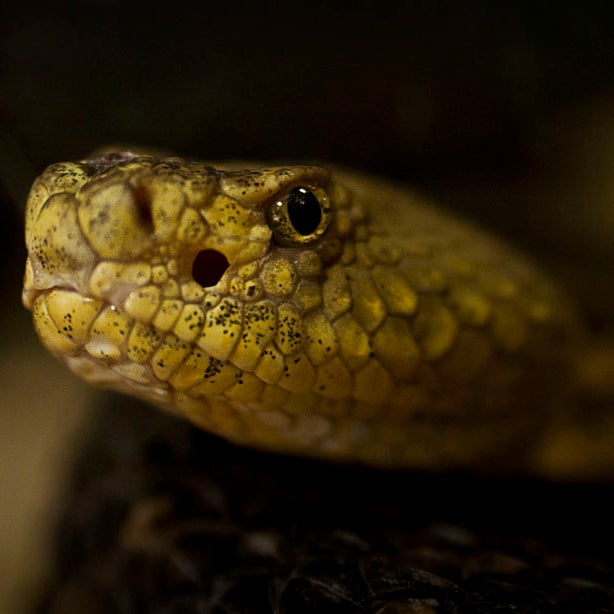You stand a of being killed by lightning or a bee sting than you do of dying from a snakebite. Heck, statistics indicate that your chances of being bitten are virtually zero. At the time of this writing, our country’s population was 327,681,128 people. Even using the highest estimate from the Centers for Disease Control and Prevention of 8,000 annual snakebites per year, the odds of you being bitten are 40,965 to one.
And let’s say you do get bitten. The odds of that bite being fatal are 1,400 to one. Most of those deaths are the result of preexisting conditions or the inherent vulnerability of being either very young or very old. Otherwise-healthy individuals who seek treatment live through the experience. Eighty percent of snakebite victims are discharged from the hospital within 48 hours.
So why are you and I afraid of snakes? It’s a product of evolution. Our brains are programmed to make us wary of ancient threats—things like falling from height and saber-toothed tigers. Those instincts haven’t yet caught up with the modern world. You should fear your bad driving on the way to McDonald’s more than a snakebite.
The below is a reality check, comparing how our perception of the threat of snakebite stacks up to the actual risk.
But First, Some Statistics
- In the United States, people are bitten by venomous snakes each year.
- of people bitten by snakes are male, ages 17 to 27.
- of bites are to the fingers and hands.
- of snakebites occur on the feet and legs, rarely above the ankle.
- of snakebite victims were handling the snake at the time of the bite.
- of snakebite victims were intoxicated.
- Denim clothing can reduce the amount of venom injected by a snakebite by or more.
- On average, from snakebites each year.
Some Practical Advice
Those statistics also give you some idea of how best to avoid a snakebite. The most obvious and most effective advice I can give you is this: Don’t pick up a venomous snake.
What makes up for the 30 percent of victims who were bitten on the fingers and hands but weren’t handling the snake at the time? Well, they were likely using their hands for work, shoving them into prime snake habitat. Don’t stick your hands into a pile of brush or stack of logs without first examining it for snakes. Wear heavy leather gloves.
Worried about the exceedingly unlikely event of a snake biting your leg as you pass? A pair of sturdy boots and full-length pants () should be enough to prevent a bite. Any over-the-ankle footwear should perform even better, and a set of gaiters or a pair of heavy-duty outdoor pants like the Fjällräven Keb Trekking Trousers will boost protection even more.
Work through the statistics far enough and it’s pretty easy to conclude that snakebite avoidance is remarkably straightforward. The CDC agrees. Here’s the full extent of :
- Do not try to handle any snake.
- Stay away from tall grass and piles of leaves when possible.
- Avoid climbing on rocks or piles of wood where a snake may be hiding.
- Be aware that snakes tend to be active at night and in warm weather.
- Wear boots and long pants when outdoors.
- Wear leather gloves when handling brush and debris.
Snakebite Treatment
This one’s easy too. All that stuff about tourniquets, cutting open bites, or trying to suck out the venom by current medical thinking. Instead, the advice is simply to seek medical treatment immediately. If you’re a long way from that, try to keep your heart rate down and the bite location below the level of your heart.
You can wash the bite with soap and water and wrap it in a clean, dry dressing. Note the color and markings on the snake so you can report back to the hospital, but they’ll likely have a good idea what type of snake it was based on your location and the circumstances in which you encountered it. Stay calm.
What About Your Dog?
Every dog and every owner is different. Solutions that work for me and my dogs may not be advisable for you and yours. Training methods and approaches also differ widely. Consult your vet and other dog owners in your area for recommendations.
Here in California, my dogs and I encounter rattlesnakes regularly. I put Wiley, our five-year-old mutt, through rattlesnake-avoidance training when he was younger. That consists of a trainer fitting the dog with a shock collar and walking him through a course of caged rattlesnakes. If and when the dog shows interest in a snake, it’s shocked. This worked for us. Today, if we encounter a snake, Wiley will place himself between it and me and prevent me from getting too close. But Wiley is a natural protector, so I think he’d have figured most of that out on his own, without all the shocking.
Different dogs with different instincts will probably respond differently. We haven’t put our younger dog, Bowie, through the training. He’s picked up most of his lessons simply from mimicking Wiley, and we’ve successfully called him off the snakes he’s encountered thus far. Both dogs go off-leash in rattlesnake country every day.
If you’re worried about your dog and snakes, the best advice anyone can give is to avoid snake country during snake season or to keep your dog on a leash. There’s also a rattlesnake venom vaccine that can be administered yearly. I haven’t felt the need for it, but your vet might have a different opinion.
In terms of first aid for dogs, you should always carry Benadryl when you’re outdoors with them. In the event of a bite, it can help keep swelling down and their airway open until you can get them to a vet. All the other human first-aid advice applies otherwise. The formula I’ve read is one milligram per pound of body weight, once every four hours. It’s impossible to find liquid Benadryl these days, but you can crush up the pills, stick them in a water bottle, and squirt that down a dog’s throat. But I’m just some guy on the internet—talk to your vet about how much you should give your dog in the event of a bite.
The size, age, and health of your dog, as well as how fast you get it to a vet, are all variables in the ultimate effect a snakebite will have, as are the size and type of snake and the amount of venom it ends up injecting, if any. But survive rattlesnake bites.
Are you or your dog going to die from a snakebite? With some common sense and practical precautions, the answer is almost certainly no.
Snakebite statistic sources: , , , , .


